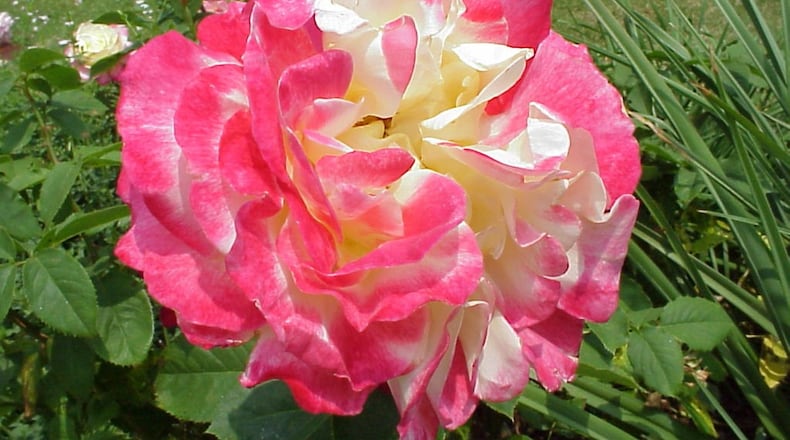Q: I need help identifying a rose that my grandmother had. This climbing rose blooms once a year in April. The color of the petals ranges from pink to purple. Lynn McKenzie, Cobb County
A: The Greater Atlanta Rose Society (atlantarose.org) has several volunteer rose experts who can help with rose identification. Anyone can contact them for free advice on identifying, selecting and maintaining roses. You might be interested in their 2020 rose show, which begins May 18. It will be held completely online and promises to be a great opportunity to see beautiful roses.
Q: Do you have any suggestions to keep the worms from eating my young peaches? I have honeybees nearby. Suzanne Ledford, email
A: Plum curculio is a small "snout beetle" that attacks peaches and plums. Adults overwinter in debris near a tree and emerge in spring. The female lays her eggs in small wounds she carves in the fruit. You can often see a clear gum oozing out afterwards. These insects are active primarily at night. Once the eggs hatch, they feed inside the fruit, leading folks to say they find "worms." Organic control of plum curculio is almost impossible. I recommend you apply a bee-friendly fungicide like Daconil or Captan twice every spring, once when most petals are open and once when most have fallen. When you see tiny green fruit after flowers are gone, apply a fruit tree insecticide spray according to label instructions. Destroy all blemished fruit. Do not leave any on the ground.
Q: I read that pimento peppers saved Georgia farmers from the boll weevil and that many farms were located near Griffin. Our state was once the "Pimento Pepper Capitol of the World"! Why does no one grow them anymore? Roy Herren, Griffin
A: The pimento pepper story in Georgia began in 1911 with a Spalding County farmer who planted Spanish pimento seed. Once he developed a way to easily remove the pepper skin, the Pomona Products Company was formed to market the sweet peppers. By 1929, 7,000 acres of pimentos were cultivated in the counties around Griffin. At one time there were 20 pepper processing plants. By 1950, production peaked but farmers turned away from pimento peppers because they were so labor intensive to grow and so hard to sell with much profit. I have a collection of fact sheets about the agricultural heritage of Georgia, including watermelons, muscadines, peanuts and mules (!) at bit.ly/GAheritage.
Q: Are loropetalum leaves dangerous for dogs to eat? My dog doesn't obsess about them but he takes a mouthful every time we pass by one in the neighborhood. Gus Callaway, Decatur
A: I'm not a veterinarian but to my knowledge loropetalum leaves are not harmful. As long as the dog doesn't show any ill effects, I guess it's okay to let him have his treat.
About the Author
The Latest
Featured

